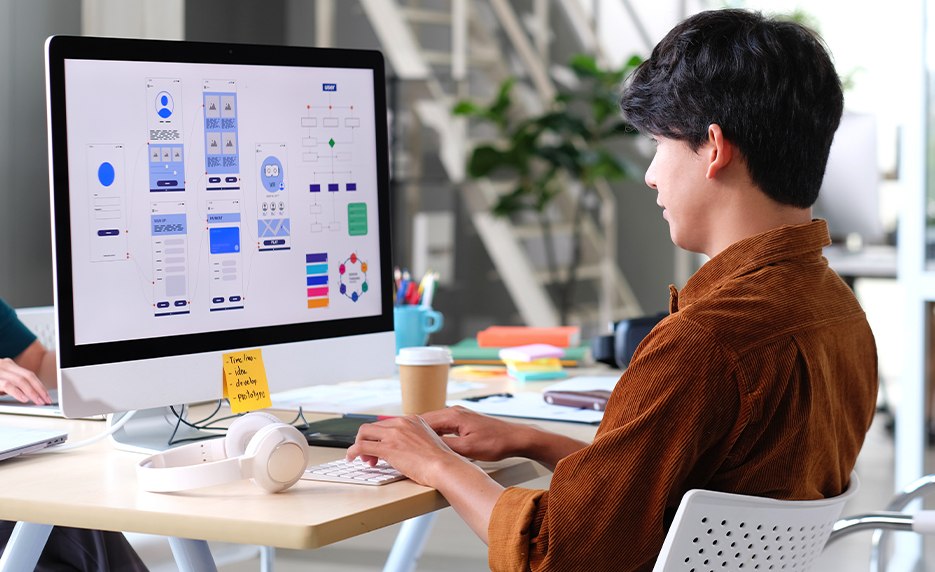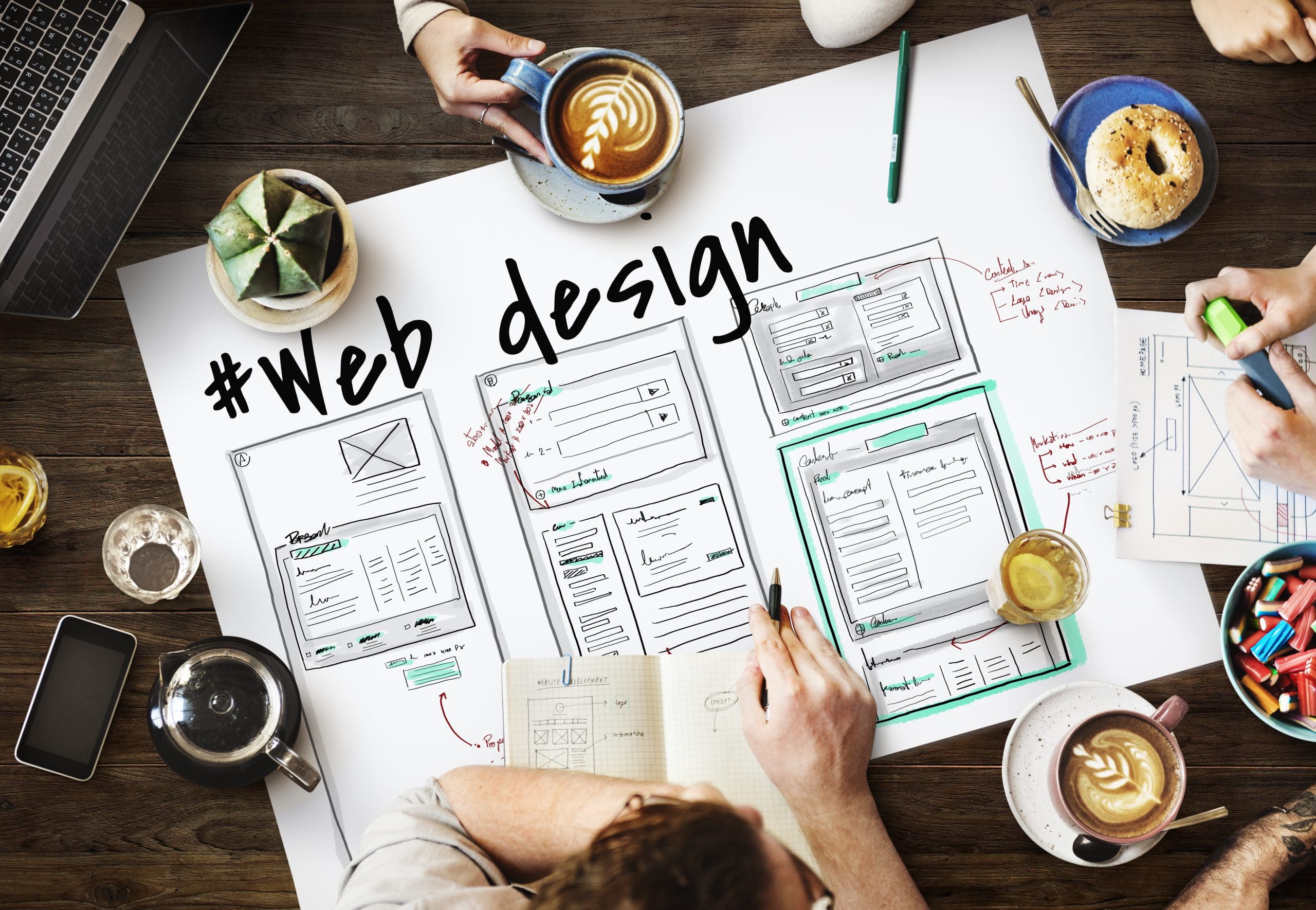How Web Design Johannesburg Is Transforming the Digital Experience in 2025
Wiki Article
The Impact of User Experience on Successful Web Design Approaches
Individual experience (UX) is an essential consider the performance of website design techniques. It encompasses functionality and ease of access, influencing exactly how individuals connect with a website. A well-crafted UX can cause enhanced involvement and retention. Nonetheless, many designers neglect important components that add to a favorable experience. Comprehending these aspects is very important for success. What specific methods can enhance UX and ultimately drive better results?Comprehending Individual Experience: Definition and Significance
Customer experience (UX) functions as a critical component in the domain name of website design, fundamentally forming just how customers engage with digital systems. It incorporates the overall experience a user has while steering a website, including variables such as usability, access, and fulfillment. A well-designed UX not just boosts customer involvement but also influences individual retention and conversion rates. Understanding UX is important for designers, as it helps determine individual requirements and choices, allowing for the production of user-friendly user interfaces. Concentrating on UX promotes a favorable emotional response from individuals, which is necessary for developing brand name loyalty. Inevitably, a solid emphasis on user experience can bring about a successful digital visibility, ensuring that internet sites efficiently satisfy individuals' objectives and expectations.Crucial Element of Reliable Website Design
Effective internet Design pivots on a number of crucial elements that boost user experience. User-friendly navigating, a distinct visual pecking order, and responsive design versatility are necessary for ensuring and directing customers ease of access throughout gadgets. Recognizing these components can considerably affect the overall efficiency of a site.Instinctive Navigating Design
Just how can user-friendly navigating Design transform a visitor's experience on a site? Intuitive navigation streamlines the user's trip, enabling visitors to locate details swiftly and efficiently. This type of Design uses clear labels, sensible framework, and acquainted formats to lessen confusion. By focusing on necessary web content and arranging it hierarchically, customers can easily locate preferred pages without unneeded clicks. In addition, responsive navigation components, such as dropdown food selections and breadcrumb tracks, enhance use throughout tools. Effective instinctive navigation not only boosts customer fulfillment yet additionally decreases bounce rates, motivating longer site interaction. Ultimately, a seamless navigation experience cultivates a sense of depend on and confidence, making visitors most likely to return and check out better, thus enhancing the general success of the website.Visual Power Structure Relevance

A well-structured visual hierarchy plays a critical role in directing individuals via a site's material, matching the intuitive navigation Design that enhances general user experience. By focusing on components such as dimension, color, contrast, and positioning, developers can effectively accentuate essential info and contacts us to action. This company permits individuals to swiftly determine essential areas, facilitating much easier comprehension and navigating. Additionally, a consistent aesthetic power structure aids develop a cohesive brand name identity, enhancing depend on and involvement. When users can easily refine details, they are most likely to communicate favorably with the website, ultimately resulting in greater conversion prices - Web Design Johannesburg. As a result, executing a clear visual pecking order is a fundamental element of reliable website design approaches, greatly affecting customer fulfillment and retention
Receptive Design Versatility
What makes a web site absolutely adaptable across various tools? Receptive design adaptability is crucial for guaranteeing optimal customer experience. This Design technique uses liquid grids, adaptable images, and CSS media queries to change the layout based upon the tool's display dimension and resolution. Reliable receptive Design not just improves visual charm but likewise enhances capability by allowing individuals to browse perfectly, no matter of the platform made use of. Crucial element include prioritizing material pecking order, making sure touch-friendly interfaces, and preserving fast packing times. By concentrating on these facets, developers can create sites that satisfy varied individual needs, eventually bring about higher individual contentment and involvement. In today's electronic landscape, adaptability is no longer optional; it is essential for effective web Design.The Role of Navigation in User Experience
Efficient navigating is crucial for boosting customer experience on internet sites. It works as a roadmap, directing individuals easily with numerous sections and material. A well-structured navigation system reduces complication and irritation, permitting site visitors to situate details promptly. Key aspects of effective navigating consist of quality, consistency, and simpleness. Clear labels help users understand where links will certainly take them, while consistent positioning enhances knowledge throughout web pages. Additionally, a simplified food selection can minimize cognitive overload, making it easier for individuals to choose. Using breadcrumbs and dropdowns additionally enhances functionality by providing context and additional paths. Inevitably, strong navigation promotes customer complete satisfaction, encourages longer visits, and raises the probability of conversions, solidifying its essential function in successful internet Design techniques.
Receptive Design: Fulfilling Individual Demands Throughout Gadgets
Receptive Design is increasingly vital in suiting the diverse series of devices used to access the internet today. This strategy assures that internet sites supply an exceptional watching experience, no matter of screen size or positioning. By utilizing fluid grids, adaptable photos, and media questions, responsive Design allows for smooth adaptation throughout tablets, smart devices, and desktop computers. This flexibility not just improves functionality however likewise accommodates varying customer choices and contexts. With even more customers depending on mobile phones for on-line interactions, the need for receptive Design has become essential in maintaining user contentment and interaction. Services that focus on receptive Design can better meet customer assumptions, which eventually adds to greater retention prices and enhanced total performance in the digital landscape.Enhancing Individual Involvement Through Visual Design
Aesthetic Design plays an important role in improving user interaction by leveraging elements such as color psychology, typography, and interactive attributes. The strategic use shades can evoke psychological actions, while well-chosen typography boosts readability and visual allure - Web Design South Africa. Furthermore, incorporating interactive aspects cultivates customer involvement, creating a much more immersive experienceColor Psychology Consequences
Shade psychology plays a vital role in shaping customer interaction within website design, as different tones can influence and stimulate unique emotions behavior. As an example, blue commonly conveys trust and reliability, making it a preferred choice for company sites. On the other hand, red can trigger seriousness and enjoyment, regularly seen in call-to-action buttons. Green normally represents harmony and health, interesting customers in wellness and environmental industries. By purposefully picking shades, developers can develop a visual hierarchy that overviews user activities and boosts the overall experience. In addition, constant color pattern add to brand name recognition and commitment. Ultimately, recognizing the mental results of shade enables web designers to craft interesting interfaces that resonate with users, resulting in improved communications and conversions.Typography's Role in Interaction
Efficient web Design relies not just on color choices yet likewise on typography, which significantly affects customer interaction. The choice of typefaces, dimensions, and spacing can either enhance or detract from an individual's experience. Understandable and clear typography allows users to conveniently absorb material, urging them to invest even more time on a website. In addition, a constant typographic hierarchy overviews the individual's eye, emphasizing crucial information and helping with navigating. Distinct font selections can likewise mirror a brand name's identification, producing a more powerful emotional link with the audience. Ultimately, efficient typography not only boosts readability but additionally cultivates an aesthetically enticing environment, boosting general Web Design South Africa interaction and motivating users to return for future interactions.Interactive Components Value
While customers navigate a website, the presence of interactive components greatly enhances their involvement and general experience. These aspects, such as switches, sliders, and quizzes, welcome users to participate actively instead than passively consuming material. By cultivating interaction, designers can create a much more personalized experience, allowing customers to link and discover with the material in meaningful ways. Additionally, interactive functions can record interest and keep customers on the website longer, decreasing bounce rates. They additionally offer prompt responses, reinforcing user activities and motivating more exploration. As a result, incorporating interactive aspects right into website design methods not just elevates aesthetic allure however also substantially adds to individual satisfaction and retention, inevitably leading to greater conversion prices.Determining Individual Experience: Methods and tools
Determining user experience is important for understanding how properly a web site satisfies the needs of its users. Different tools and strategies are available for this purpose, consisting of customer screening, surveys, and analytics. User screening often includes observing genuine individuals as they engage with a site, providing insights into usability issues. Studies can collect direct feedback on user fulfillment and viewed value. Analytics tools track individual actions, highlighting areas where users may lose or battle rate of interest. In addition, heatmaps envision customer interactions, revealing which components stand out. By employing a combination of these techniques, internet developers can get a thorough understanding of user experience, bring about notified Design decisions that enhance total internet site effectiveness.
Often Asked Concerns
Just How Does User Experience Affect Conversion Fees on Sites?
User experience significantly influences conversion prices on web sites. A seamless user interface, intuitive navigation, and engaging web content can enhance user contentment, leading to boosted trust and higher likelihood of completing preferred actions, thus boosting total conversions.What Are Common Individual Experience Errors in Website Design?
Common customer experience errors in internet Design include chaotic layouts, slow filling times, inadequate navigating, not enough mobile optimization, absence of clear calls-to-action, and disregarding availability standards, every one of which can substantially impede user involvement and complete satisfaction.Just How Commonly Should Internet Design Be Upgraded for Ideal Customer Experience?
Website design must be updated regularly, ideally every 1-2 years, to adapt to evolving individual preferences and technological innovations. Frequent evaluations boost functionality, ensuring that the site stays relevant and interesting for its audience.
Can Customer Experience Influence Search Engine Optimization Rankings?
User experience greatly affects SEO positions. Internet Advertising In South Africa. Browse engines focus on sites that offer smooth navigation, quickly filling times, and engaging material, thereby awarding sites that enhance individual complete satisfaction with higher visibility in search results pageWhat Are Some Examples of Exceptional Customer Experience in Website Design?
Examples of excellent user experience in website design consist of intuitive navigating, receptive designs, fast packing times, clear contact us to activity, and involving visuals. These aspects add to user complete satisfaction and urge long term interaction with the internet site.Customer experience (UX) serves as an important element in the domain name of internet Design, basically forming exactly how customers engage with electronic platforms. A well-structured aesthetic hierarchy plays an essential duty in directing individuals through a website's content, matching the instinctive navigation Design that improves general user experience. With even more users counting on mobile devices for on the internet interactions, the requirement for receptive Design has actually ended up being vital in maintaining user contentment and interaction. Measuring individual experience is essential for understanding exactly how successfully a website satisfies the needs of its individuals. Customer screening usually entails observing genuine individuals as they engage with a website, providing understandings into use issues.
Report this wiki page